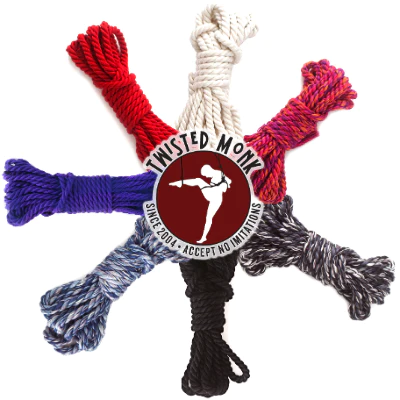Rope Bondage Beyond the Binary
How rope play can be gender-affirming for transgender bodies
When we see rope bondage out in the world, it’s typically represented by slim, white cisgender women. “In general, heteronormativity in the rope community is probably the most overwhelming mood,” says Sosha Belle.
As awareness and acceptance of diverse gender expressions and identities progress, there’s a need for more inclusivity of transgender people in rope bondage spaces.
Alice (not their real name) says learning to communicate with trans people as equals, rather than a subject that needs to be studied would go a long way in creating more affirming rope play experiences. Same for learning how to talk with a trans person about their needs and desires. “As it is, there are a lot of gendered expectations in rope play communities. The more cishet they are, the more likely they’re going to try and enforce these expectations,” they say. “Basically, they will rely on gender roles that don’t fit the queer or trans community by forcing topping on men and bottoming on women, with no room for anyone in between.”
Belle believes that one of the biggest things that rope workshops could do for inclusivity is changing the default and affirming what you can do. “Teaching and demonstrating ties on different bodies and having a diversity of bodies at performance spaces would be a really big step.”
”Rope bondage is a wonderful place not to have to worry about dysphoria because it doesn’t matter how much you keep on,” says Belle. It can be done over a binder or packer and underwear. For AFAB transgender men and nonbinary people who’ve not had top surgery, many harnesses and torso ties accentuate the chest area. A “front hands TK,” where arms are crossed in front of the torso, is one alternative. Another option would be a hip harness, like a gunslinger. “The focus is so whole body-centric that you can really pick and choose where you want to keep your focus,” says Belle.
Whether you’re doing the tying or being tied up, Belle points out you’re really being seen in a good rope scene. “Having someone engage in that kind of play requires a level of understanding and trust that I wouldn’t really engage in with someone who wasn’t acknowledging my gender,” they say. “Being seen and having it be safe can be gender-affirming. Having positive attention put on my body when I’m used to having negative attention, whether that’s gender euphoria or whatnot, but even just like having a chance to have my body celebrated in whatever way I’m choosing to use it in a given day is a really affirming experience.”
Belle also engages in rope play separate from sexual activity. “It can be a way to access physical intimacy with other people without the threat of dysphoria that comes with genital-related sex, they share. “It’s very much a kink-specific thing.”
For Alice, the allure of rope bondage is more than just being acknowledged. For them, as someone who’s medically transitioned, the physical intimacy of rope play and how it connects with the form of their body is an acknowledgment of how their body has changed. “It’s a way for me to experience my body and those changes in a way that daily life doesn’t present, and sex doesn’t necessarily present,” they share. “Between the vulnerability, acknowledgment, and just the sensation of feeling the rope on my body, it gives me an opportunity to be comfortable in my skin in ways that daily life in our transphobic society prevents me from feeling on a daily basis.”
The bottom line: Rope bondage is for everybody, but its culture must look beyond the binary to make it inclusive for all bodies.
Ryn Pfeuffer (she/her) is a queer sex writer, sex worker, and kink enthusiast in Seattle. Find her writing work here, or follow her on Twitter or Instagram.
Also in News

Exotic Bamboo Rope Review by Pete Riggs of Ropeconnections.com
Pete Riggs of Ropeconnections.com recently did a very through and in depth review of our exotic bamboo ropes, including washing! Check it out, along with tons of other great rope content and tutorials!


